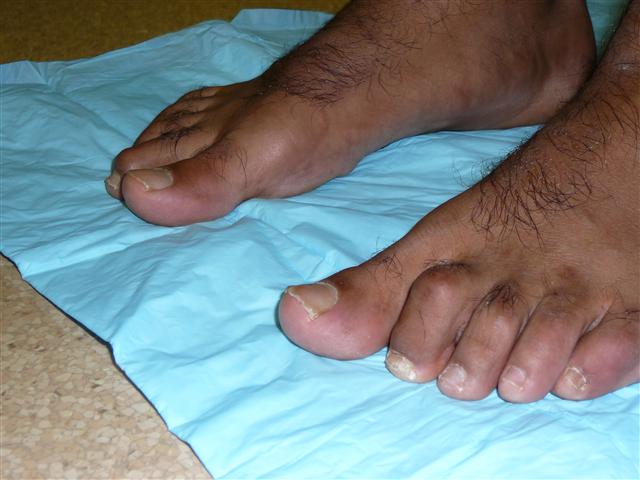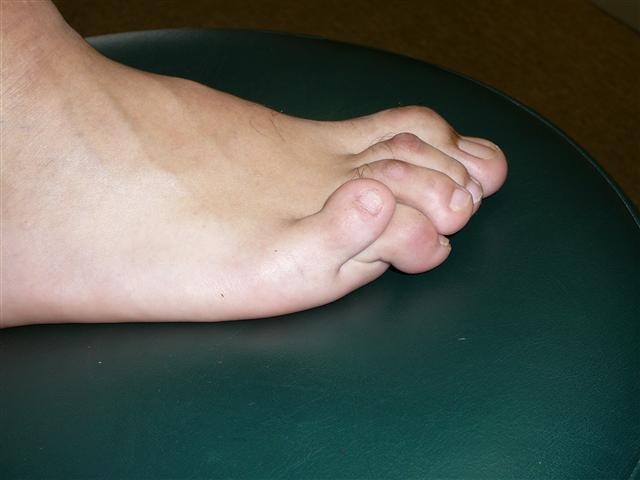A hammer toe is a deformity of the proximal interphalangeal joint of the second, third, or fourth toe causing it to be permanently bent, resembling a hammer. Mallet toe is a similar condition affecting the distal interphalangeal joint.
Hammer toe most frequently results from wearing poorly-fit shoes that can force the toe into a bent position, such as excessively high heels or shoes that are too short or narrow for the foot. Having the toes bent for long periods of time can cause the muscles in them to shorten, resulting in the hammer toe deformity. This is often found in conjunction with bunions or other foot problems. It can also be caused by muscle, nerve, or joint damage resulting from conditions such as osteoarthritis, rheumatoid arthritis, stroke, Charcot-Marie-Tooth disease or diabetes.

A common cause of hammertoe and mallet toe is wearing improper footwear — shoes that are too tight in the toe box, or high-heel shoes. Wearing shoes of either type can push your toes forward, crowding one or more of them into a space that’s not large enough to allow your toes to lie flat.

Hammertoe and mallet toe deformities can also be inherited and may occur despite wearing appropriate footwear. The result is a toe that bends upward in the middle and then curls down in a hammer-like or claw-like shape. Your shoes can rub against the raised portion of the toe or toes, causing painful corns or calluses. The bottom of the affected toe can press down, creating the mallet-like appearance of mallet toe.
At first, a hammertoe or mallet toe may maintain its flexibility and lie flat when you’re not wearing crowded footwear. But eventually, the tendons of the toe may contract and tighten, causing your toe to become permanently stiff.
Other causes of hammertoe and mallet toe may include:
- An injury in which you jam or break your toe
- Abnormal foot mechanics because of nerve and muscle damage to your toe resulting from diabetes (diabetic neuropathy)
- Other diseases that affect nerves and muscles, such as arthritis or stroke
TREATMENT
If your toe is still flexible, I may recommend that you change to roomier and more comfortable footwear and that you wear shoe inserts (orthotics) or pads. Wearing inserts or pads can reposition your toe and relieve pressure and pain.
If your toe has become tight and inflexible, your doctor may recommend surgery. The specific procedure depends on how much flexibility is left in your toe:
- If your toe has some flexibility, your doctor may straighten it by making an incision in the toe and releasing the tendon.
- If your toe is rigid, your doctor may not only cut or realign tendons but also remove some pieces of bone to straighten your toe. This procedure may require that the bones be fixed temporarily with pins while your toe heals.
Usually, you can go home from the hospital on the day of your toe surgery.
